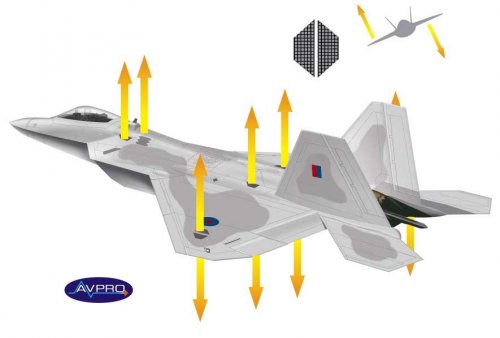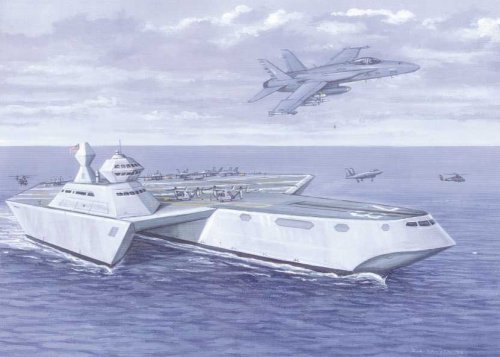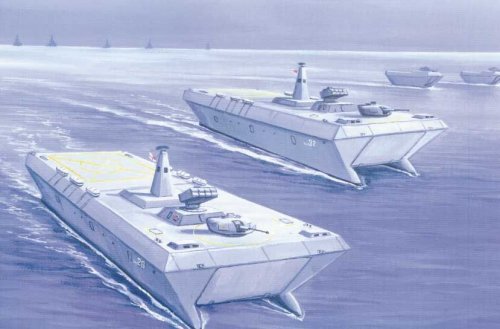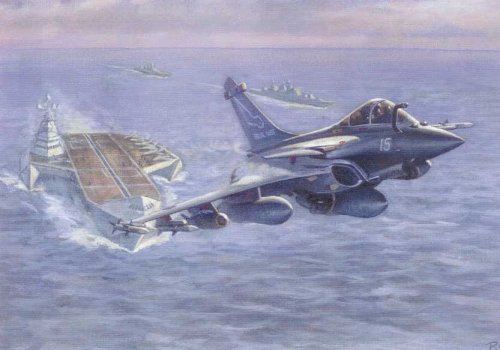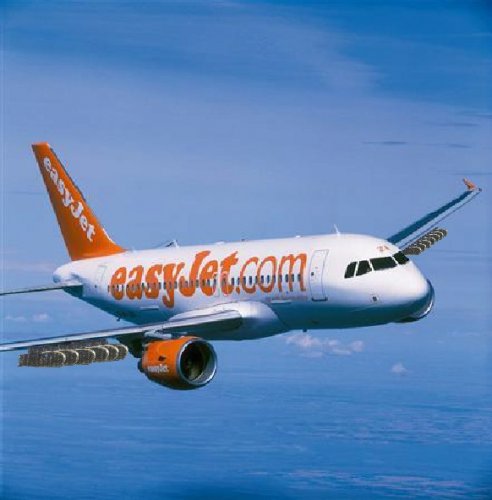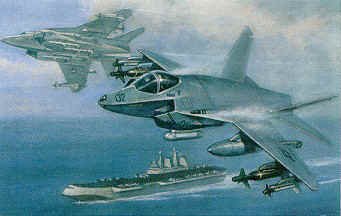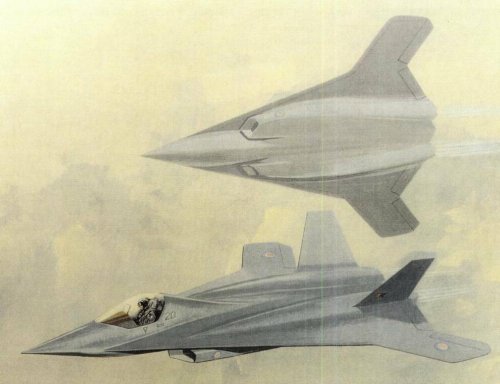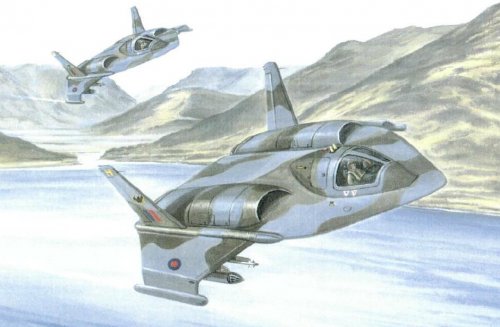Artist's impression of AVPRO Stealth Trimaran Aircraft Carrier (STAC) concept.
The 40,000 tonne (44,092 US tons) STAC could operate an air wing of up to 55 aircraft using both ski-jump for STOVL aircraft and a 450 ft (140 m) long diagonal flight deck for launching CTOL aircraft.
The STAC concept has a very low radar cross section (RCS), its profile being that of a small ship, making it extremely difficult to detect. The stealth aspects of the design are meticulous, with every part of the ship's design being scrutinized for maximum effect. To contribute to its low RCS, even the integrated mast on the carrier's superstructure has no exposed moving parts, while exhaust from the ship's engines is vented through the sides of the inner and outer hulls, considerably reducing thermal signature.
The portside flight deck is equipped with an electromagnetic rail launch system for CTOL aircraft operations. At the stern of the ship is a rotating flight lift, known as a Skyrocker, for rapid re-arming and stowing of aircraft, similar in operation to automated car parking systems currently being used in Europe and Japan.
The Trimaran's design allows the STAC to reach speeds in excess of 40 knots and provides greatly stability in high seas, making flight operations safer than currently possible on current monohull carrier designs.
Source:
Oliver, David and Ryan, Mike.
Warplanes of the Future London: Salamander Books. 2003. pp. 106-107.
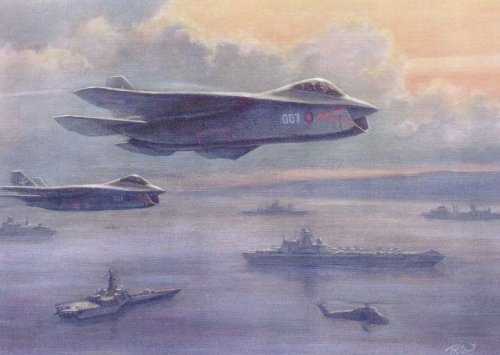 Avpro CD 2 NN.jpg77.7 KB · Views: 344
Avpro CD 2 NN.jpg77.7 KB · Views: 344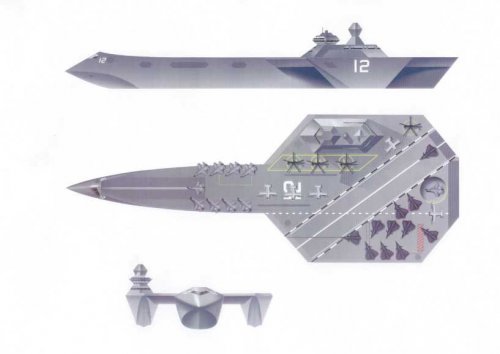 Avpro CD 2 RR.jpg33.3 KB · Views: 1,084
Avpro CD 2 RR.jpg33.3 KB · Views: 1,084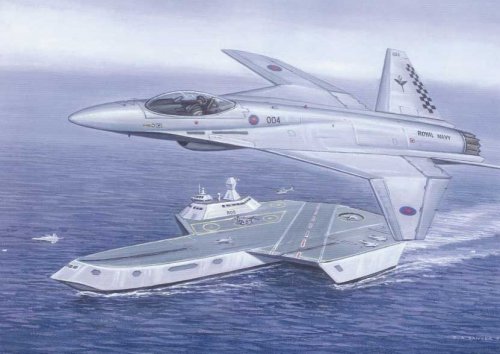 Avpro CD 2 R.jpg77.7 KB · Views: 1,034
Avpro CD 2 R.jpg77.7 KB · Views: 1,034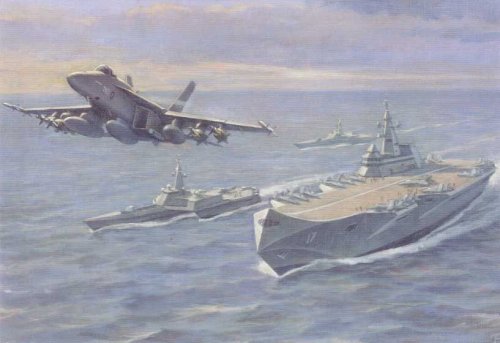 Avpro CD 2 QQ.jpg61.3 KB · Views: 420
Avpro CD 2 QQ.jpg61.3 KB · Views: 420 Avpro CD 2 Q.jpg63.9 KB · Views: 1,376
Avpro CD 2 Q.jpg63.9 KB · Views: 1,376 Avpro CD 2 P.jpg83 KB · Views: 1,210
Avpro CD 2 P.jpg83 KB · Views: 1,210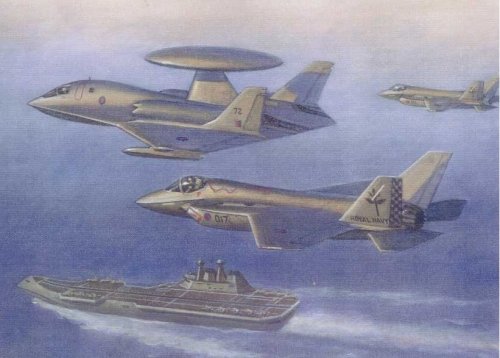 Avpro CD 2 OO.jpg83.8 KB · Views: 1,398
Avpro CD 2 OO.jpg83.8 KB · Views: 1,398 Avpro CD 2 O.jpg60.3 KB · Views: 382
Avpro CD 2 O.jpg60.3 KB · Views: 382


